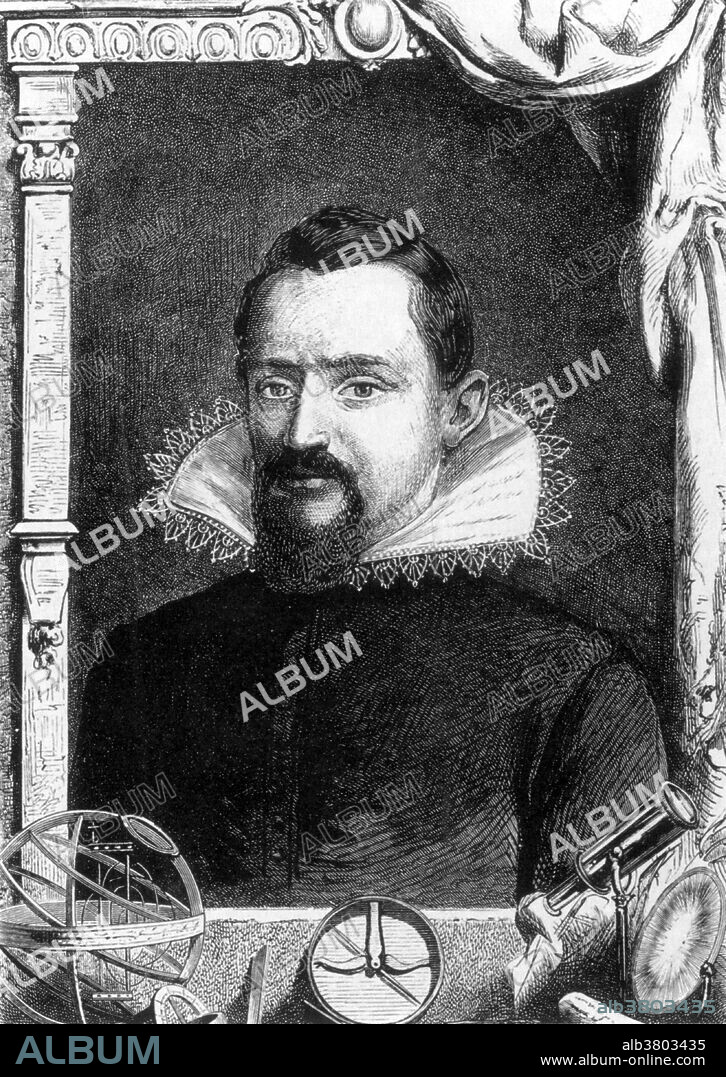alb3803435
Johannes Kepler, German Astronomer

|
Ajouter à une autre Lightbox |
|
Ajouter à une autre Lightbox |



Avez-vous déjà un compte? S'identifier
Vous n'avez pas de compte ? S'inscrire
Acheter cette image

Titre:
Johannes Kepler, German Astronomer
Légende:
Voir la traduction automatique
Johannes Kepler (December 27, 1571 - November 15, 1630) was a German mathematician, astronomer and astrologer. A key figure in the 17th century scientific revolution, he is best known for his works Astronomia nova, Harmonices Mundi, and Epitome Astronomiae Copernicanae. These works also provided one of the foundations for Isaac Newton's theory of universal gravitation. Kepler devised the three fundamental laws of planetary motion. These laws were based on detailed observations of the planets made by Tycho Brahe and himself. Kepler's first law states that the planets orbit the Sun in elliptical paths, with the Sun at one focus of the ellipse. The second law states that the closer a planet comes to the Sun, the faster it moves. Kepler's third law states that the ratio of the cube of a planet's mean distance from the Sun to the square of its orbital period is a constant. In his final years, he spent much of his time traveling, finally settling in Regensburg, but he soon fell ill. He died in 1630 at the age of 58. His burial site was lost after the Swedish army destroyed the churchyard, but his self-authored epitaph survived the times: Mensus eram coelos, nunc terrae metior umbras. Mens coelestis erat, corporis umbra iacet. (I measured the skies, now the shadows I measure. Skybound was the mind, earthbound the body rests.)
Crédit:
Album / Science Source / New York Public Library
Autorisations:
Modèle: Non - Propriété: Non
Questions sur les droits?
Questions sur les droits?
Taille de l'image:
3300 x 4652 px | 43.9 MB
Taille d'impression:
27.9 x 39.4 cm | 11.0 x 15.5 in (300 dpi)
Mots clés:
16E SIECLE • 16EME S • ALLEMAND • ALLEMANDE • ASTROLOGIE • ASTRONOMIE • CÉLÈBRE • CELEBRITE • EUROPÉEN • HOMME DE SCIENCE • HOMME • ILLUSTRATION • MATHEMATICIEN • MATHÉMATIQUE • PERSONNAGES • PERSONNALITÉS • PERSONNE • PORTAIT • PORTRAIT • POTRAIT • SAVANT • SCIENCE: ASTROLOGIE • SCIENCE: ASTRONOMIE • SCIENTIFIQUE • SEIZIÈME SIÈCLE • XVIE SIECLE • ZODIAQUE, ASTROLOGIE
 Pinterest
Pinterest Twitter
Twitter Facebook
Facebook Copier le lien
Copier le lien Email
Email
